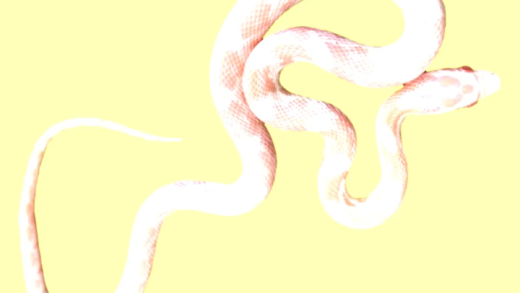Marbled Hatchetfish are small, lively fish known for their unique appearance and jumping abilities. They thrive in the upper layers of aquariums and prefer soft, slightly acidic water. These fish are social, making them great for community tanks, but their jumping ability means tank covers are essential. With proper care and a suitable environment, they showcase vibrant behavior and beautiful colors.
Marbled Hatchetfish Overview: What Are They?
Marbled Hatchetfish are small, fascinating freshwater fish known for their unique appearance and playful nature. These fish belong to the family Caracidae and are commonly found in the Amazon Basin. Their distinctive, flattened bodies resemble a hatchet, which is where their name comes from. Marbled Hatchetfish typically grow to about 2-3 inches in length, making them perfect for smaller aquariums.
These fish are peaceful and thrive in community tanks, often swimming in the upper levels of the water column. They are known for their agility and jumping ability, which can surprise new aquarium owners. In terms of care, they require a well-maintained tank with plenty of swimming space and plants for cover. Their diet consists mainly of small live or frozen foods, making them relatively easy to feed.
Natural Habitat: Where Do They Live?
In the wild, Marbled Hatchetfish inhabit slow-moving rivers, streams, and flooded forests in South America. Their natural habitat features dense vegetation and floating debris, providing them with ample hiding spots and foraging opportunities. These conditions help them avoid predators while allowing them to hunt for small insects and crustaceans.
The water in their natural environment is typically soft and slightly acidic, with a temperature range of 75 to 82 degrees Fahrenheit. Replicating these conditions in a home aquarium is crucial for their health and well-being. A well-planted tank with gentle filtration will mimic their natural habitat, helping them feel secure and thrive.
Appearance: What Do They Look Like?
Marbled Hatchetfish are visually striking, with a unique coloration that features a blend of grey, silver, and brown hues. Their bodies are flat and oval-shaped, allowing them to glide effortlessly through the water. The most distinctive feature is their marbled pattern, which varies among individual fish, making each one unique.
They possess large, expressive eyes and long, delicate fins that contribute to their graceful swimming style. The fins are often transparent, adding to their ethereal appearance. Overall, the combination of their shape and color makes Marbled Hatchetfish a popular choice among aquarists, adding a touch of elegance to any aquarium setup.
Aquarium Behavior: How Do They Act in Tanks?
Marbled Hatchetfish exhibit fascinating aquarium behavior that can captivate any fish enthusiast. These fish are known for their lively activity in the upper levels of the water column. They often swim in small schools, which enhances their social nature and reduces stress. Their agility is impressive; they dart around quickly, showcasing their exceptional swimming skills.
One notable aspect of their behavior is their tendency to leap out of the water, especially when startled. This jumping ability is not just a survival instinct; it’s also part of their playful demeanor. To accommodate this behavior, it is crucial to have a well-covered aquarium to prevent any escapes. Additionally, they thrive in environments that mimic their natural habitats, which include dense vegetation and floating plants.
In community tanks, Marbled Hatchetfish are generally peaceful and can coexist with many other species. However, they can be skittish, so it is best to avoid aggressive tank mates. Providing them with plenty of hiding spots helps them feel secure, encouraging natural behaviors and reducing stress.
Diet: What Do They Eat?
The diet of Marbled Hatchetfish is primarily composed of small live or frozen foods, making them relatively easy to feed. These fish enjoy a variety of foods, including brine shrimp, daphnia, and small flakes designed for tropical fish. It is essential to provide a balanced diet to ensure their health and vibrant coloration.
Feeding them a mix of high-quality flake food and live or frozen options will keep them active and healthy. Regular feeding schedules, ideally two to three times a day, are recommended to mimic their natural foraging behavior. Be cautious not to overfeed, as this can lead to water quality issues and health problems.
In addition to their primary diet, Marbled Hatchetfish may also nibble on algae and plant matter. This natural behavior can help maintain a balanced ecosystem in the aquarium. Always monitor their eating habits and adjust the diet as needed to promote optimal health.
Tank Care: How to Keep Them Healthy at Home?
Proper tank care is crucial for the well-being of Marbled Hatchetfish. Start with a minimum tank size of 20 gallons to provide ample swimming space. The water should be kept soft and slightly acidic, ideally between 75 to 82 degrees Fahrenheit, to mimic their natural habitat. Regular water changes are necessary to maintain water quality.
Filtration should be gentle, as strong currents can stress these fish. Adding plenty of live plants not only decorates the tank but also creates hiding spots and helps maintain water quality. Floating plants are particularly beneficial, as they provide cover and reduce light intensity, making the fish feel more secure.
Regular monitoring of water parameters, including pH, ammonia, nitrites, and nitrates, is essential. A well-balanced environment will allow Marbled Hatchetfish to thrive, showcasing their beautiful colors and lively behavior. Always be observant of any changes in behavior or appearance, as these can be signs of stress or health issues.
Swimming Behavior: Why Are They Top Swimmers?
Marbled Hatchetfish are top swimmers, favoring the upper layers of the aquarium. This behavior stems from their natural habitat, where they thrive near the water’s surface. Their flattened bodies allow them to glide effortlessly, making them agile and quick. They often swim in small schools, which not only enhances their social interaction but also boosts their confidence.
These fish exhibit a unique swimming style characterized by quick darts and graceful movements. Their ability to maneuver swiftly helps them evade potential predators. Observing them in action can be quite entertaining as they dart and dash around the tank, often displaying bursts of energy. Providing ample space and a well-planted environment mimics their natural conditions, allowing them to express their swimming behaviors fully.
Jumping Abilities: Can They Leap Out?
Marbled Hatchetfish are notorious for their jumping abilities. They are capable of leaping out of the water, especially when startled. This behavior is not just a survival tactic; it also reflects their playful nature. In an aquarium setting, it’s essential to ensure that the tank is covered to prevent these curious fish from jumping out.
Their jumping skills are a result of their natural instincts. In the wild, they may leap to escape predators or to catch airborne insects. In a home aquarium, providing floating plants or decorations can help keep them engaged, reducing the likelihood of jumping. Always monitor their environment to maintain a safe habitat for these lively swimmers.
Unique Features: What Sets Them Apart?
Marbled Hatchetfish are distinct in several ways that make them a favorite among aquarists. Their unique body shape, resembling a hatchet, is not just for show; it aids in their swimming and leaping abilities. Additionally, their marbled coloration provides excellent camouflage against predators in their natural habitat.
Another fascinating feature is their large, expressive eyes, which enhance their ability to detect movement and navigate their surroundings. Their social nature makes them engaging pets, often interacting with each other and their environment. This combination of appearance, behavior, and personality makes Marbled Hatchetfish a delightful addition to any aquarium setup.
Compatibility: How Do They Interact with Other Fish?
Marbled Hatchetfish are generally peaceful and can coexist with various community fish. They thrive in well-planted tanks with plenty of hiding spots, which helps reduce stress and encourages natural behavior. Suitable tank mates include small tetras, rasboras, and other non-aggressive species.
However, it’s crucial to avoid aggressive fish, as they can intimidate Marbled Hatchetfish and cause stress. Observing the interactions within the tank can provide insights into their compatibility. A well-balanced community tank not only enhances the beauty of your aquarium but also contributes to the overall well-being of your Marbled Hatchetfish.





Comments are closed.